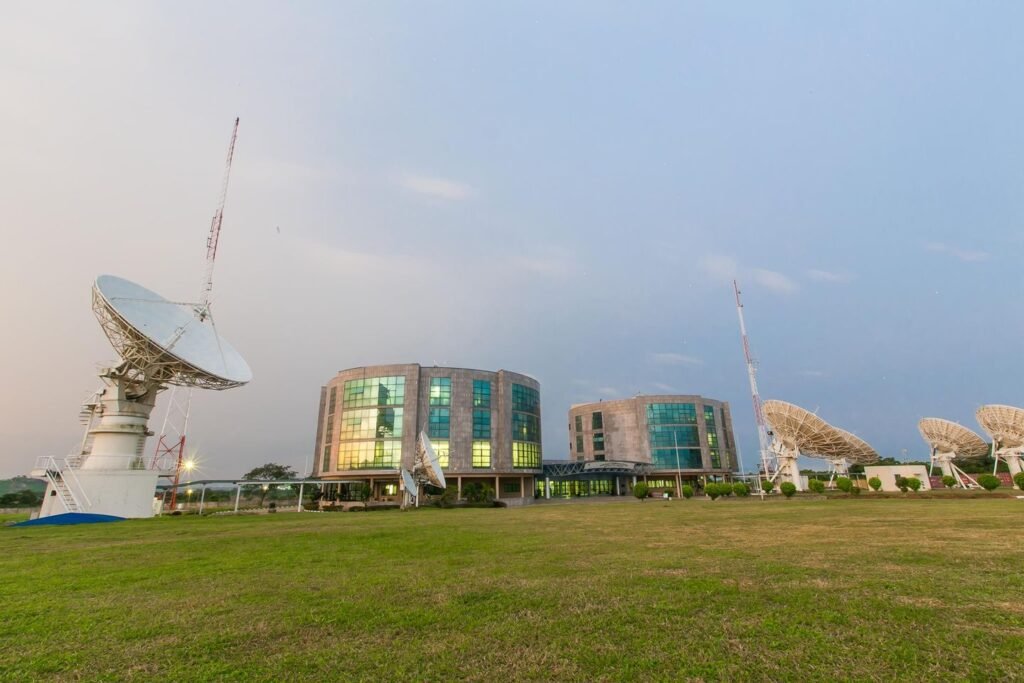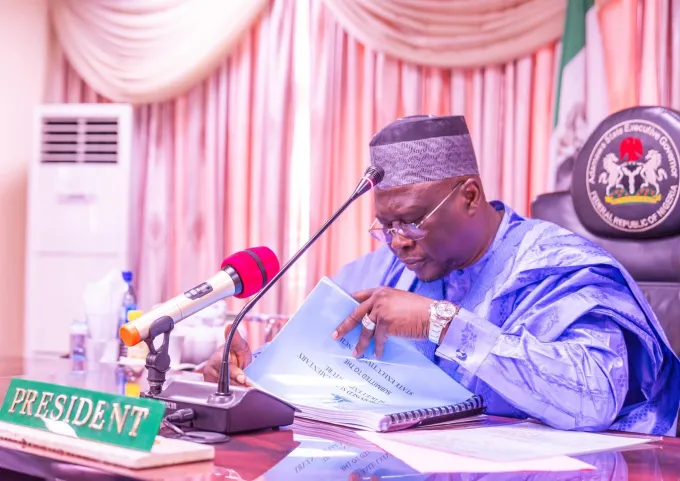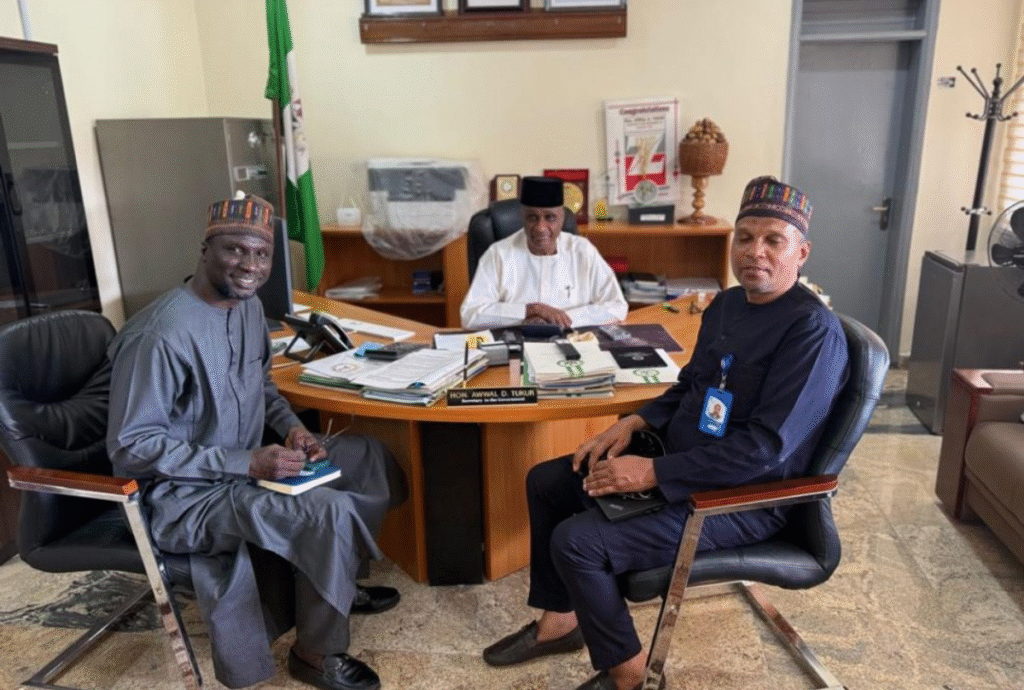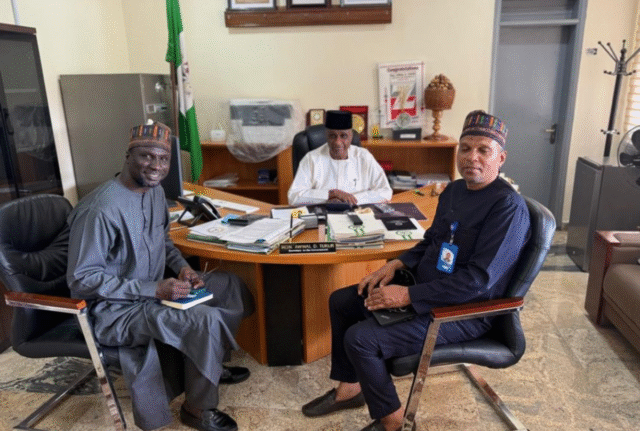In an ambitious move to amplify its broadcasting footprint across West Africa, the Adamawa State Government has formalised a strategic agreement with the Nigerian Communications Satellite Limited (NIGCOMSAT). The deal will see Adamawa Television (ATV) lease 2 MHz on the Ku-band of the NIGCOMSAT-1R satellite, significantly expanding its reach and signal reliability far beyond previous limits.
Under the auspices of Governor Ahmadu Umaru Fintiri’s digital transformation vision—branded Adamawa 2.0—the initiative aims to reposition ATV from a regional broadcaster into a continental voice. Officials describe the step as transformative: it will improve coverage, ensure broadcast stability, and allow the station to deliver its content across much wider geographies.
At the signing ceremony, the State Commissioner for Information and Strategy, Hon. Iliya James, expressed high optimism about the collaboration. “This partnership with NIGCOMSAT marks a turning point in our pursuit of modernising state media,” he affirmed. He noted that through this lease, ATV would broaden its outreach, deepen information access, and showcase Adamawa’s culture and development story to African audiences.
The Secretary to the State Government (SSG), Barr. Awwal D. Tukur, lauded the move as evidence of Governor Fintiri’s foresight, emphasising that digital innovation and e-governance were foundational to the administration’s development agenda. He suggested the broadcast leap is both a symbolic and practical signal to investors that the state is ready for new possibilities.
From the NIGCOMSAT side, officials pledged full technical support to ensure the Ku-band lease delivers smooth, uninterrupted transmission and broad signal coverage. This reinforces the satellite provider’s role as a strategic enabler for public institutions looking to evolve in a digital age.
For ATV, the partnership marks the start of a new chapter. The station is expected to become a more dynamic, digitally equipped broadcaster capable of promoting government initiatives, attracting investment, and celebrating Adamawa’s cultural heritage on a continental stage.

Table of Contents
Broadcasting Innovation and the Drive for Regional Connectivity
This move is part of a larger narrative unfolding across Nigeria and Africa: states and national entities are turning to satellite infrastructure to overcome the limitations of terrestrial broadcasting. In many parts of West Africa, terrestrial signal coverage is hampered by terrain, infrastructure gaps, and limited infrastructure investment. Satellite leasing offers a path to leapfrog those constraints, ensuring stable coverage across borders.
By leasing Ku-band capacity, ATV is effectively gaining access to a broadcasting medium that is less sensitive to ground-level interference and more capable of covering broad swathes of geography with a consistent signal. This is especially crucial for states like Adamawa, which cover large land areas and diverse terrains.
For viewers, the benefits may include better picture and sound quality, more reliable access in remote areas, and possibly expanded programming options as ATV evolves its broadcasting model. For the government, it provides a platform to project state narratives, attract external interest, and integrate more effectively into continental discourse.

Implications for Media, Governance, and Investment
This collaboration has implications beyond broadcasting. It touches on governance, public communication, and state development strategy:
- Information equity: Communities hitherto on the fringes of broadcast reach now stand to gain access to local news, public service announcements, and educational content. Broadening access strengthens inclusive governance.
- Government messaging: The ability to project state initiatives across borders can position Adamawa not only as a regional leader, but also as a destination for investment and cultural exchange.
- Cultural diplomacy: Through broader reach, Adamawa can share its festivals, languages, arts, and heritage with a wider audience—fostering a sense of shared identity in West Africa.
- Media competition and innovation: This move may create pressure on other state broadcasters to modernise, adopt satellite partnerships, or improve their digital infrastructure to retain competitiveness.
- Economic signal: Leasing satellite capacity demonstrates a willingness to invest in high-tech infrastructure and may send a positive signal to telecom, media, and satellite service providers eyeing partnerships in sub-Saharan Africa.
Challenges, Sustainability, and Future Prospects
While this is a bold step, success will hinge on implementation, sustainability, and strategic planning:
- Technical consistency: Satellite bandwidth must be managed well. Any downtime or signal instability could undermine trust among new viewers.
- Content strategy: Expanding reach is meaningful only if accompanied by compelling, high-quality programs that resonate with broader West African audiences.
- Revenue model: ATV must adapt its business model—perhaps through advertising, sponsorships, or content syndication—to sustain operations at scale.
- Regulatory and licensing frameworks: Cross-border broadcasting brings challenges related to licensing, content standards, and jurisdictional regulations across different countries.
- Audience awareness and adoption: Viewers must know the station is available and have access to the proper receiving equipment (satellite dishes, decoders), especially in rural zones.
- Partnerships and alliances: Strengthening ties with regional broadcasters, content creators, and media houses could amplify reach and enrich programming.

In light of these, the Adamawa–NIGCOMSAT partnership can be a case study in how subnational entities can harness satellite infrastructure to bridge media access gaps and reimagine their role in a continental context.
As ATV transitions from a state-focused broadcaster to a continental voice, its success will depend on handling the technical, financial, and content dimensions in harmony. If managed well, this move could inspire similar initiatives across Nigeria and beyond, advancing a new chapter in African public broadcasting.
Join Our Social Media Channels:
WhatsApp: NaijaEyes
Facebook: NaijaEyes
Twitter: NaijaEyes
Instagram: NaijaEyes
TikTok: NaijaEyes





